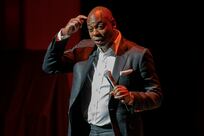What if marketers could read shoppers' minds? Not psychically, intuitively or even figuratively, but physically, on a computer screen or printed report? The possibility has enticed advertising executives for generations, but only in the past few years have companies emerged claiming to offer such a view by using the latest brain scanning technology for a new field of research called neuromarketing.
Though still a fledgling industry, it seems to be getting a boost from the economic downturn. This week, NeuroFocus, a Berkeley, California, neuromarketing firm in which the Nielsen Company bought a stake in last year, announced the purchase of the British neuromarketing company Neuroco. In the months just before that, Buyology, a book by Martin Lindstrom, explaining neuromarketing to general audiences, hit the best-seller lists of The New York Times and The Wall Street Journal. Lindstrom, a marketing consultant who works with the top executives of companies such as McDonald's, Procter & Gamble and GlaxoSmithKline, said neuromarketing becomes more attractive when economic conditions place greater pressure on brands to get their marketing messages right.
"I work with some of the largest brands in the world, and nine out of 10 of the largest brands in the world are using neuromarketing," he said. "And this is just the beginning we are seeing right now. The financial downturn is fuelling this even further. Over the next 10 years, this is going to be one of the top fields for research." In 2004, Lindstrom teamed up with a group of neuroscientists to conduct a three-year, US$7 million (Dh25.7m) study funded by eight multinational corporations that scanned the brains of some 2,000 volunteers as they responded to branding images, safety warnings and other media messages.
The study employed two types of brain-scanning devices normally used for diagnosing illnesses; the functional magnetic resonance imaging (fMRI), which measures the amount of oxygenated blood going to a certain area of the brain; and a type of electroencephalograph known as the SST, or steady state typography, which tracks rapid brain waves in real time. The scans revealed brain activity that often directly contradicted what subjects said they felt about certain messages, such as whether they preferred Coke over Pepsi. In the process, they turned many long-held beliefs about advertising - from mantras such as "sex sells" to the notion that product placement in films works - on their heads.
In one example, study subjects were placed in an fMRI and shown pictures of the warnings on cigarette packs, ranging from simple text warning signs to photographs of black lungs. The part of their brains that was stimulated was the nucleus accumbens, or so-called "craving spot", since these images were often associated with the moments before the subjects lit up a cigarette. In written surveys, the subjects claimed the signs curbed their desire to smoke, but in actuality their brains betrayed them.
"In short, the fMRI results showed the cigarette warning labels not only failed to deter smoking, but by activating the nucleus accumbens, it appeared they actually encouraged smokers to light up," Lindstrom wrote. Although the term neuromarketing was coined in 2002 by Professor Ale Smidts, now a professor of market research at the Rotterdam School of Management and scientific director of the Erasmus Research Institute of Management, it was not until two years later, when the Baylor College of Medicine in Houston, Texas, hosted the first conference on the topic, that it made waves in the scientific community. The most famous finding was by one of the college's professors, Read Montague, who conducted blind taste tests of Coca-Cola and Pepsi while its subjects were hooked up to brain fMRI machines. When the subjects did not know what they were drinking, their brains showed they preferred Pepsi, since the section of the brain associated with reward would show activity. When the subjects did know what they were drinking, however, areas associated with memory and emotion showed activity - and they tended to say they preferred Coke. The conclusion was that consumers chose Coke based on its brand, not its flavour.
Not long afterward, however, a backlash began. In 2005, Nature Neuroscience, a prominent scientific magazine, published an editorial calling neuromarketing "little more than a new fad, exploited by scientists and marketing consultants to blind corporate clients with science". Today, there is increasing enthusiasm for and investment in neuromarketing, as well as a healthy dose of scepticism. Roger Dooley, the author of the Neuromarketing blog, points out that "no true neuromarketing studies have been published in peer-reviewed journals or otherwise validated".
However, he noted there was a great deal of ongoing academic research in "neuroeconomics", as he called it, including work in predicting purchasing behaviour and evaluating the impact of price on buying decisions. Companies are willing to shell out for neuromarketing consultants and studies even without broad consensus in the scientific community because neuromarketing offers marketers something they have not been able to get before, he says.
"Traditional market research tools like questionnaires and focus groups are not very good at uncovering customer motivations and answering questions such as, "Why do you prefer Coca Cola?'" he said. "Neuromarketing techniques can illuminate brain activity outside our consciousness and help answer some of those elusive 'why' questions." Dr David Lewis, a neuropsychologist and the director of research at Mindlab International at the University of Sussex, has studied neuromarketing techniques for years, but is wary of the sudden rush of media attention.
Playing on the old scientific quip that there is "speculation, speculation squared - and cosmology", in reference to the impossibility of knowing the origins and fate of the universe, Dr Lewis said of his own profession, "There is "speculation, speculation squared - and neuroscience". "An awful lot of it is, I think, commercial hype," he said. "People have jumped on to a bandwagon, and they have seen it as a way to spend an awful large amount of money from companies desperate to know how to market their projects."
But that is not to say that he does not consider neuromarketing a rich field for research. In his mind, however, all neuromarketing studies are not created equal. He is critical of the fMRI technology, which is good at showing activity in one area of the brain versus another, but not good at tracking precisely when this happened. "FMRI is like taking a snapshot and having it developed," he said "In terms of time, it is not accurate."
He also believes it has limited commercial application since the machines are so expensive and so uncomfortable to operate. Instead, he is more interested in QEEG technology, a digital version of the old electroencephalography (EEG) technology that records electrical activity along the scalp produced by the firing of neurons within the brain. Others must be interested, too, since his QEEG market research company, Neuroco, was recently purchased by NeuroFocus.
"EEG has got quite a long history behind it, but the commercial interest in EEG is very, very new," he said. "When I started working in the late 70s, there was absolutely no commercial interest at all. Just recently in the last five or six years, it's suddenly become a bandwagon on which everyone wants to jump." Dr Lewis believes this trend is likely to continue, downturn or not. "We are very much seduced by the idea of being able to read minds," he said.
khagey@thenational.ae Martin Lindstrom will be presenting his Buy-ology Symposium, Live & In Person in Dubai on April 19 at the Westin Hotel; tel: 04 509 6774, or visit www.globalleadersevents.com/lindstrom for details.





